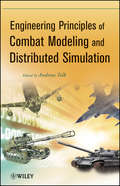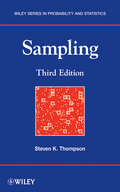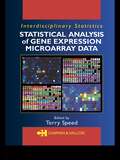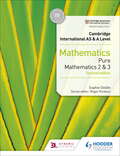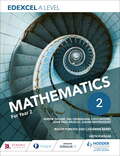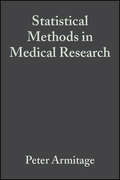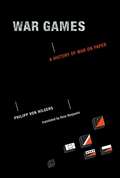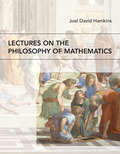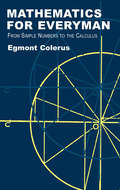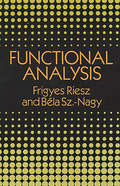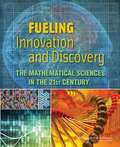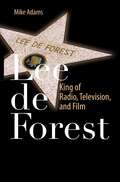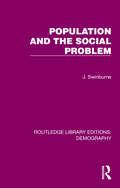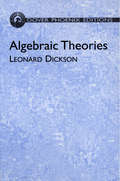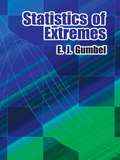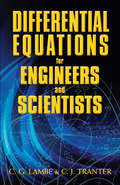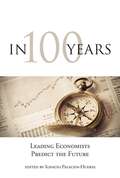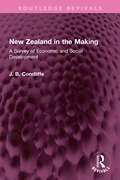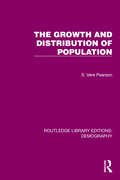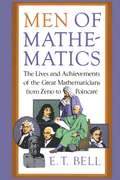- Table View
- List View
الرسالة المستطرقة فى علوم الحديث
by محمد بن جعفر الكتانيوقد قال (ابن حجر) في أول (مقدمة فتح الباري) ما نصه: اعلم أن آثار النبي ـ صلى الله عليه وسلم ـ لم تكن في عصر الصحابة وكبار التابعين مدونة في الجوامع، ولا مرتبه، لأمرين: أحدهما: أنهم كانوا في ابتداء الحال قد نهوا عن ذلك، كما ثبت في (صحيح مسلم)، خشية أن يختلط بعض ذلك بالقرآن العظيم. وثانيهما: لسعة حفظهم، وسيلان أذهانهم، ولأن أكثرهم كانوا لا يعرفون الكتابة. ثم حدث في أواخر عصر التابعين تدوين الآثار، وتبويب الأخبار، لمّا انتشر العلماء في الأمصار، وكثر الابتداع من الخوارج والروافض ومنكري الأقدار، واتسع الخرق على الراقع، وكاد أن يلتبس الباطل بالحق. فأول من جمع في ذلك (الربيع بن صبيح) (وسعيد ابن أبي عروبة) وغيرهما. دونت أحكام الحديث في منتصف القرن الثاني وكانوا يصنفون كل باب على حده، إلى أن قام كبار أهل الطبقة الثانية في منتصف القرن (ص 6) الثاني، فدونوا الأحكام. فصنف (الإمام مالك) (الموطأ) بالمدينة، وتوخى فيه القوي من حديث أهل الحجاز، ومزجه بأقوال الصحابة، وفتاوى التابعين، ومن بعدهم. أول من صنف الحديث بمكة ابن جريج وصنف (أبو محمد عبد الملك بن عبد العزيز بن جريج) بمكة، (وأبو عمرو عبد الرحمن بن عمرو الأوزاعي) بالشام، (وأبو عبد الله سفيان بن سعيد الثوري) بالكوفة، (وأبو سلمة حماد بن سلمة بن دينار) بالبصرة. ثم تلاهم كثير من أهل عصرهم في النسج على منوالهم، إلى أن رأى بعض الأئمة منهم، أن يفرد حديث النبي ـ صلى الله عليه وسلم ـ خاصة، وذلك على رأس المائتين. فصنف (عبيد الله بن موسى العبسي الكوفي) مسندا، وصنف (مسدد بن مسرهد البصري) مسندا، وصنف (أسد بن موسى الأموي) مسندا، وصنف (نُعيم بن حماد الخزاعي) نزيل مصر مسندا، ثم اقتفى الأئمة بعد ذلك أثرهم، فقلَّ إمام من الحفاظ إلا وصنف حديثه على المسانيد، (كالإمام أحمد بن حنبل) (و إسحاق بن راهويه) (وعثمان بن أبي شيبة) وغيرهم من النبلاء. ومنهم من صنف على الأبواب والمسانيد معا (كأبي بكر بن أبي شيبة) اهـ. وعبارته في (إرشاد الساري) قال: منهم من رتب على المسانيد (كالإمام أحمد بن حنبل) (و إسحاق بن راهويه) (وأبي بكر ابن أبي شيبة) (وأحمد بن منيع) (وأبي خيثمة) (والحسن بن سفيان) (وأبي بكر البزار) وغيرهم. ومنهم من رتب على العلل: بأن يجمع في كل متن طرقه، واختلاف الرواة فيه، بحيث يتضح إرسال ما يكون متصلا، أو وقف ما يكون مرفوعا، أو غير ذلك. ومنهم من رتب على الأبواب الفقهية، وغيرها، ونوّعه أنواعا، وجمع ما ورد في كل نوع، وفي كل حكم إثباتا ونفيا، في باب فباب، بحيث يتميز ما يدخل في الصوم مثلا عما يتعلق بالصلاة. وأهل هذه الطريقة منهم من تقيد بالصحيح (كالشيخين) وغيرهما، ومنهم من لم يتقيد بذلك كباقي الكتب الستة، وكان أول من صنف في الصحيح (محمد بن إسماعيل البخاري). ومنهم المقتصر على (ص 7) الأحاديث المتضمنة للترغيب والترهيب، ومنهم من حذف الإسناد واقتصر على المتن فقط، (كالبغوي) في (مصابيحه) (واللؤلؤي) في (مشكاته) اهـ.
الفصل في الملل و الآهواء و النحل
by ابن حزمإن كثيراً من الناس كتبوا في افتراق الناس في دياناتهم ومقالاتهم كتباً كثيرة جداً فبعض أطال وأسهب وأكثر وهجر واستعمل الأغاليط والشغب فكان ذلك شاغلاً عن الفهم قاطعاً دون العلم وبعض حذف وقصر وقلل واختصر واضرب عن كثير من قوي معارضات أصحاب المقالات فكان في ذلك غير منصف لنفسه في أن يرضى لها بالغبن في الإبانة وظالماً لخصمه في أن لم يوفه حق اعتراضه وباخساً حق من قرأ كتابه إذ لم يغنه عن غيره وكلهم إلا تحلة القسم عقد كلامه تعقيداً يتعذر فهمه على كثير من أهل الفهم وحلق على المعاني من بعد حتى صار ينسي آخر كلامه أوله وأكثر هذا منهم ستائر دون فساد معانيهم فكان هذا منهم غير محمود في عاجله وآجله.
Engineering principles of combat modeling and distributed simulation
by Andreas TolkExplore the military and combat applications of modeling and simulation Engineering Principles of Combat Modeling and Distributed Simulation is the first book of its kind to address the three perspectives that simulation engineers must master for successful military and defense related modeling: the operational view (what needs to be modeled); the conceptual view (how to do combat modeling); and the technical view (how to conduct distributed simulation). Through methods from the fields of operations research, computer science, and engineering, readers are guided through the history, current training practices, and modern methodology related to combat modeling and distributed simulation systems. Comprised of contributions from leading international researchers and practitioners, this book provides a comprehensive overview of the engineering principles and state-of-the-art methods needed to address the many facets of combat modeling and distributed simulation and features the following four sections: Foundations introduces relevant topics and recommended practices, providing the needed basis for understanding the challenges associated with combat modeling and distributed simulation. Combat Modeling focuses on the challenges in human, social, cultural, and behavioral modeling such as the core processes of "move, shoot, look, and communicate" within a synthetic environment and also equips readers with the knowledge to fully understand the related concepts and limitations. Distributed Simulation introduces the main challenges of advanced distributed simulation, outlines the basics of validation and verification, and exhibits how these systems can support the operational environment of the warfighter. Advanced Topics highlights new and developing special topic areas, including mathematical applications fo combat modeling; combat modeling with high-level architecture and base object models; and virtual and interactive digital worlds. Featuring practical examples and applications relevant to industrial and government audiences, Engineering Principles of Combat Modeling and Distributed Simulation is an excellent resource for researchers and practitioners in the fields of operations research, military modeling, simulation, and computer science. Extensively classroom tested, the book is also ideal for courses on modeling and simulation; systems engineering; and combat modeling at the graduate level.
Sampling
by Steven K. ThompsonMathFeatures new developments in the field combined with all aspects of obtaining, interpreting, and using sample data. Sampling provides an up-to-date treatment of both classical and modern sampling design and estimation methods, along with sampling methods for rare, clustered, and hard-to-detect populations. This Third Edition retains the general organization of the two previous editions, but incorporates extensive new material--sections, exercises, and examples--throughout. Inside, readers will find all-new approaches to explain the various techniques in the book; new figures to assist in better visualizing and comprehending underlying concepts such as the different sampling strategies; computing notes for sample selection, calculation of estimates, and simulations; and more. Organized into six sections, the book covers basic sampling, from simple random to unequal probability sampling; the use of auxiliary data with ratio and regression estimation; sufficient data, model, and design in practical sampling; useful designs such as stratified, cluster and systematic, multistage, double and network sampling; detectability methods for elusive populations; spatial sampling; and adaptive sampling designs.Featuring a broad range of topics, Sampling, Third Edition serves as a valuable reference on useful sampling and estimation methods for researchers in various fields of study, including biostatistics, ecology, and the health sciences. The book is also ideal for courses on statistical sampling at the upper-undergraduate and graduate levels.
Statistical Analysis of Gene Expression Microarray Data (Chapman And Hall/crc Interdisciplinary Statistics Ser.)
by Terry SpeedAlthough less than a decade old, the field of microarray data analysis is now thriving and growing at a remarkable pace. Biologists, geneticists, and computer scientists as well as statisticians all need an accessible, systematic treatment of the techniques used for analyzing the vast amounts of data generated by large-scale gene expression studies
Cambridge International AS & A Level Mathematics Pure Mathematics 2 and 3 second edition
by Sophie GoldieExam board: Cambridge Assessment International EducationLevel: A-levelSubject: MathematicsFirst teaching: September 2018First exams: Summer 2020Endorsed by Cambridge Assessment International Education to provide full support for Paper 2 and 3 of the syllabus for examination from 2020.Take mathematical understanding to the next level with this accessible series, written by experienced authors, examiners and teachers.- Improve confidence as a mathematician with clear explanations, worked examples, diverse activities and engaging discussion points. - Advance problem-solving, interpretation and communication skills through a wealth of questions that promote higher-order thinking. - Prepare for further study or life beyond the classroom by applying mathematics to other subjects and modelling real-world situations.- Reinforce learning with opportunities for digital practice via links to the Mathematics in Education and Industry's (MEI) Integral platform in the eBooks.**To have full access to the eBooks and Integral resources you must be subscribed to both Boost and Integral. To trial our eBooks and/or subscribe to Boost, visit: www.hoddereducation.com/Boost; to view samples of the Integral resources and/or subscribe to Integral, visit integralmaths.org/internationalPlease note that the Integral resources have not been through the Cambridge International endorsement process. This book covers the syllabus content for Pure Mathematics 2 and Pure Mathematics 3, including algebra, logarithmic and exponential functions, trigonometry, differentiation, integration, numerical solution of equations, vectors, differential equations and complex numbers.
Edexcel A Level Mathematics Year 2
by Sophie Goldie Susan Whitehouse Val Hanrahan Cath Moore Jean-Paul MuscatHelp students to develop their knowledge and apply their reasoning to mathematical problems with worked examples, stimulating activities and assessment support tailored to the 2017 Edexcel specification.The content benefits from the expertise of subject specialist Keith Pledger and the support of MEI (Mathematics in Education and Industry).- Prepare students for assessment with skills-building activities, worked examples and practice questions tailored to the changed criteria.- Develop a fuller understanding of mathematical concepts with real world examples that help build connections between topics and develop mathematical modelling skills.- Cement understanding of problem-solving, proof and modelling with dedicated sections on these key areas.- Confidently teach the new statistics requirements with five dedicated statistics chapters and questions around the use of large data sets.- Cover the use of technology in Mathematics with a variety of questions based around the use of spreadsheets, graphing software and graphing calculators. - Provide clear paths of progression that combine pure and applied maths into a coherent whole.- Reinforce Year 1 content with short review chapters - Year 2 only.
Statistical Methods in Medical Research
by Peter Armitage Geoffrey Berry J. N. MatthewsThe explanation and implementation of statistical methods for the medical researcher or statistician remains an integral part of modern medical research. This book explains the use of experimental and analytical biostatistics systems. Its accessible style allows it to be used by the non-mathematician as a fundamental component of successful research. Since the third edition, there have been many developments in statistical techniques. The fourth edition provides the medical statistician with an accessible guide to these techniques and to reflect the extent of their usage in medical research. The new edition takes a much more comprehensive approach to its subject. There has been a radical reorganization of the text to improve the continuity and cohesion of the presentation and to extend the scope by covering many new ideas now being introduced into the analysis of medical research data. The authors have tried to maintain the modest level of mathematical exposition that characterized the earlier editions, essentially confining the mathematics to the statement of algebraic formulae rather than pursuing mathematical proofs. Received the Highly Commended Certificate in the Public Health Category of the 2002 BMA Books Competition.
War Games: A History of War on Paper
by Philipp Von Hilgers Ross BenjaminFor centuries, both mathematical and military thinkers have used game-like scenarios to test their visions of mastering a complex world through symbolic operations. By the end of World War I, mathematical and military discourse in Germany simultaneously discovered the game as a productive concept. Mathematics and military strategy converged in World War II when mathematicians designed fields of operation. In this book, Philipp von Hilgers examines the theory and practice of war games through history, from the medieval game boards, captured on parchment, to the paper map exercises of the Third Reich. Von Hilgers considers how and why war games came to exist: why mathematical and military thinkers created simulations of one of the most unpredictable human activities on earth. Von Hilgers begins with the medieval rythmomachia, or Battle of Numbers, then reconstructs the ideas about war and games in the baroque period. He investigates the role of George Leopold von Reiswitz's tactical war game in nineteenth-century Prussia and describes the artifact itself: a game board--topped table with drawers for game implements. He explains Clausewitz's emphasis on the "fog of war" and the accompanying element of incalculability, examines the contributions of such thinkers as Clausewitz, Leibniz, Wittgenstein, and von Neumann, and investigates the war games of the German military between the two World Wars. Baudrillard declared this to be the age of simulacra; war games stand contrariwise as simulations that have not been subsumed in absolute virtuality.
Lectures on the Philosophy of Mathematics
by Joel David HamkinsAn introduction to the philosophy of mathematics grounded in mathematics and motivated by mathematical inquiry and practice.In this book, Joel David Hamkins offers an introduction to the philosophy of mathematics that is grounded in mathematics and motivated by mathematical inquiry and practice. He treats philosophical issues as they arise organically in mathematics, discussing such topics as platonism, realism, logicism, structuralism, formalism, infinity, and intuitionism in mathematical contexts. He organizes the book by mathematical themes--numbers, rigor, geometry, proof, computability, incompleteness, and set theory--that give rise again and again to philosophical considerations.
Flatland
by by Edwin A. Abbott William F. Lindgren Thomas F. Banchoff by Edwin A. Abbott William F. Lindgren Thomas F. BanchoffFlatland, Edwin Abbott's story of a two-dimensional universe, as told by one of its inhabitants who is introduced to the mysteries of three-dimensional space, has enjoyed an enduring popularity from the time of its publication in 1884. This fully annotated edition enables the modern-day reader to understand and appreciate the many 'dimensions' of this classic satire. Mathematical notes and illustrations enhance the usefulness of Flatland as an elementary introduction to higher-dimensional geometry. Historical notes show connections to late-Victorian England and to classical Greece. Citations from Abbott's other writings as well as the works of Plato and Aristotle serve to interpret the text. Commentary on language and literary style includes numerous definitions of obscure words. An appendix gives a comprehensive account of the life and work of Flatland's remarkable author.
Mathematics for Everyman: From Simple Numbers to the Calculus
by Egmont ColerusMany people suffer from an inferiority complex where mathematics is concerned, regarding figures and equations with a fear based on bewilderment and inexperience. This book dispels some of the subject's alarming aspects, starting at the very beginning and assuming no mathematical education.Written in a witty and engaging style, the text contains an illustrative example for every point, as well as absorbing glimpses into mathematical history and philosophy. Topics include the system of tens and other number systems; symbols and commands; first steps in algebra and algebraic notation; common fractions and equations; irrational numbers; algebraic functions; analytical geometry; differentials and integrals; the binomial theorem; maxima and minima; logarithms; and much more. Upon reaching the conclusion, readers will possess the fundamentals of mathematical operations, and will undoubtedly appreciate the compelling magic behind a subject they once dreaded.
A Course of Modern Analysis
by E. T. Whittaker G. N. WatsonThis classic text has entered and held the field as the standard book on the applications of analysis to the transcendental functions. The authors explain the methods of modern analysis in the first part of the book and then proceed to a detailed discussion of the transcendental function, unhampered by the necessity of continually proving new theorems for special applications. In this way the authors have succeeded in being rigorous without imposing on the reader the mass of detail that so often tends to make a rigorous demonstration tedious. Researchers and students will find this book as valuable as ever.
Functional Analysis
by Béla Sz. Nagy Frigyes RieszClassic exposition of modern theories of differentiation and integration and principal problems and methods of handling integral equations and linear functionals and transformations. 1955 edition.
Fueling Innovation and Discovery
by Board on Mathematical Sciences And Their Applications National Research Council Committee on the Mathematical Sciences in 2025 Division on Engineering and Physical SciencesThe mathematical sciences are part of everyday life. Modern communication, transportation, science, engineering, technology, medicine, manufacturing, security, and finance all depend on the mathematical sciences. Fueling Innovation and Discovery describes recent advances in the mathematical sciences and advances enabled by mathematical sciences research. It is geared toward general readers who would like to know more about ongoing advances in the mathematical sciences and how these advances are changing our understanding of the world, creating new technologies, and transforming industries. Although the mathematical sciences are pervasive, they are often invoked without an explicit awareness of their presence. Prepared as part of the study on the Mathematical Sciences in 2025, a broad assessment of the current state of the mathematical sciences in the United States, Fueling Innovation and Discovery presents mathematical sciences advances in an engaging way. The report describes the contributions that mathematical sciences research has made to advance our understanding of the universe and the human genome. It also explores how the mathematical sciences are contributing to healthcare and national security, and the importance of mathematical knowledge and training to a range of industries, such as information technology and entertainment. Fueling Innovation and Discovery will be of use to policy makers, researchers, business leaders, students, and others interested in learning more about the deep connections between the mathematical sciences and every other aspect of the modern world. To function well in a technologically advanced society, every educated person should be familiar with multiple aspects of the mathematical sciences.
Lee de Forest
by Mike AdamsThe life-long inventor, Lee de Forest invented the three-element vacuum tube used between 1906 and 1916 as a detector, amplifier, and oscillator of radio waves. Beginning in 1918 he began to develop a light valve, a device for writing and reading sound using light patterns. While he received many patents for his process, he was initially ignored by the film industry. In order to promote and demonstrate his process he made several hundred sound short films, he rented space for their showing; he sold the tickets and did the publicity to gain audiences for his invention. Lee de Forest officially brought sound to film in 1919. Lee De Forest: King of Radio, Television, and Film is about both invention and early film making; de Forest as the scientist and producer, director, and writer of the content. This book tells the story of de Forest's contribution in changing the history of film through the incorporation of sound. The text includes primary source historical material, U.S. patents and richly-illustrated photos of Lee de Forest's experiments. Readers will greatly benefit from an understanding of the transition from silent to audio motion pictures, the impact this had on the scientific community and the popular culture, as well as the economics of the entertainment industry.
Population and the Social Problem (Routledge Library Editions: Demography #15)
by J. SwinburneOriginally published in 1924 and inevitably a product of the time in which it was published, the author assumes that people exercise their powers of reproduction near to capacity. The book views this pressure on population as a social problem, the fundamental cause of human and social challenges. Solutions such as a tax on children, public education and a laissez faire economic order are all suggested.
Algebraic Theories (Dover Books on Mathematics)
by Leonard DicksonThis in-depth introduction to classical topics in higher algebra provides rigorous, detailed proofs for its explorations of some of mathematics' most significant concepts, including matrices, invariants, and groups. Algebraic Theories studies all of the important theories; its extensive offerings range from the foundations of higher algebra and the Galois theory of algebraic equations to finite linear groups (including Klein's "icosahedron" and the theory of equations of the fifth degree) and algebraic invariants. The full treatment includes matrices, linear transformations, elementary divisors and invariant factors, and quadratic, bilinear, and Hermitian forms, both singly and in pairs. The results are classical, with due attention to issues of rationality. Elementary divisors and invariant factors receive simple, natural introductions in connection with the classical form and a rational, canonical form of linear transformations. All topics are developed with a remarkable lucidity and discussed in close connection with their most frequent mathematical applications.
Statistics of Extremes
by E. J. GumbelUniversally acknowledged as the classic text about statistics of extremes, this volume is geared toward use by statisticians and statistically minded scientists and engineers. It employs elementary terms to explain applications, favors graphical procedures over calculations, and presents simple generalizations as exercises -- all of which contribute to its value for students. Starting with definitions of its aims and tools, the text proceeds to discussions of order statistics and their exceedances, exact distribution of extremes, and analytical study of extremes. Additional topics include the first asymptotic distribution; uses of the first, second, and third asymptotes; and the range. 1958 edition. 44 tables. 97 graphs.
Differential Equations for Engineers and Scientists (Dover Books on Mathematics)
by C. G. Lambe C. J. TranterThis concise applications-oriented text is intended for undergraduate students in engineering, mathematics, and other areas of science. The first chapters focus on solutions of first order equations, linear equations with constant coefficients, and simultaneous equations and reducible equations. Subsequent chapters explore the method of solution by infinite series and the more important special functions of mathematical physics. The treatment examines the solution of partial differential equations as well as numerical methods of solution, including that of relaxation. Readers also receive an introduction to the theory of nonlinear differential equations. Nearly 900 worked examples and exercises include complete solutions, making this volume ideal for self-study as well as an excellent classroom text.
In 100 Years
by Ignacio Palacios-HuertaThis pithy and engaging volume shows that economists may be better equipped to predict the future than science fiction writers. Economists' ideas, based on both theory and practice, reflect their knowledge of the laws of human interactions as well as years of experimentation and reflection. Although perhaps not as screenplay-ready as a work of fiction, these economists' predictions are ready for their close-ups. In this book, ten prominent economists -- including Nobel laureates and several likely laureates -- offer their ideas about the world of the twenty-second century. In scenarios that range from the optimistic to the guardedly gloomy, these thinkers consider such topics as the transformation of work and wages, the continuing increase in inequality, the economic rise of China and India, the endlessly repeating cycle of crisis and (projected) recovery, the benefits of technology, the economic consequences of political extremism, and the long-range effects of climate change. For example, Daron Acemoglu offers a thoughtful discussion of how trends of the last century -- including uneven growth, technological integration, and resource scarcity -- might translate into the next; 2013 Nobelist Robert Shiller provides an innovative view of future risk management methods using information technology; 2012 Nobelist Alvin Roth projects his theory of Matching Markets into the next century, focusing on schools, jobs, marriage and family, and medicine; 1987 Nobelist Robert Solow considers the shift away from remunerated labor, among other subjects; and Martin Weitzman raises the intriguing but alarming possibility of using geoengineering techniques to mitigate the nevitable effects of climate change. In a 1930 essay mentioned by several contributors, "Economic Possibilities for Our Grandchildren," John Maynard Keynes offered predictions that, read today, range from absolutely correct to spectacularly wrong. This book follows in Keynes's path, hoping, perhaps, to better his average.
New Zealand in the Making: A Survey of Economic and Social Development (Routledge Revivals)
by J. B. CondliffeFirst published in 1930, New Zealand in the Making is an economic history of the democratic experiments in New Zealand. The geography, population, government ownership of public utilities, compulsory arbitration, pensions and all other factors have been covered in detail. The book will be of interest to anyone keen on learning about New Zealand as well as to students of economy, history, agriculture, and government.
The Growth and Distribution of Population (Routledge Library Editions: Demography #10)
by S. Vere PearsonOriginally published in 1935, this book examines the causes of global rural depopulation, slum housing conditions and city over-crowding. The falling birth-rate in the West, town planning, ribbon development, emigration and traffic problems are also discussed with particular focus on how they affect the growth and distribution of populations. Social, psychological and economic factors are all considered, as well as those dependent on physical geography.
Lambda Calculus with Types
by Henk Barendregt Wil Dekkers Richard StatmanThe lambda calculus forms a prototype universal programming language, which in its untyped version is related to Lisp, and has been treated in the first author's classic The Lambda Calculus (1984). The formalism has since been extended with types and used in functional programming (Haskell, Clean) and proof assistants (Coq, Isabelle, HOL), which are used to design and verify IT products and mathematical proofs. In this book, the author focuses on three classes of typing for lambda terms: simple types, recursive types and intersection types. Unexpected mathematical beauty is revealed in these three formalisms of terms and types. Numerous exercises are provided to deepen the reader's understanding and increase their confidence using types.
Men of Mathematics
by E. T. BellHere is the classic, much-read introduction to the craft and history of mathematics by E.T. Bell, a leading figure in mathematics in America for half a century. Men of Mathematics accessibly explains the major mathematics, from the geometry of the Greeks through Newton's calculus and on to the laws of probability, symbolic logic, and the fourth dimension. In addition, the book goes beyond pure mathematics to present a series of engrossing biographies of the great mathematicians -- an extraordinary number of whom lived bizarre or unusual lives. Finally, Men of Mathematics is also a history of ideas, tracing the majestic development of mathematical thought from ancient times to the twentieth century. This enduring work's clear, often humorous way of dealing with complex ideas makes it an ideal book for the non-mathematician.

